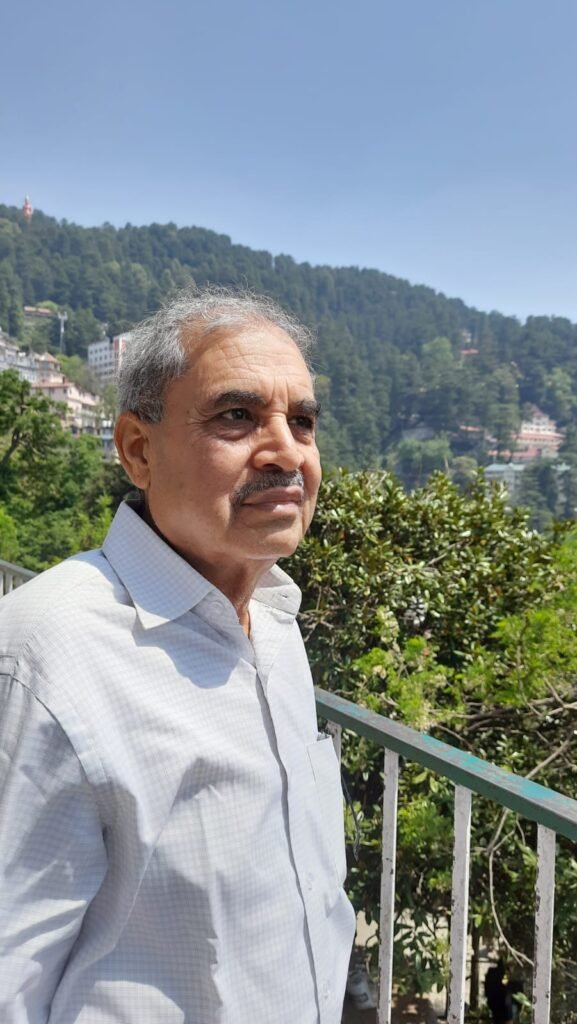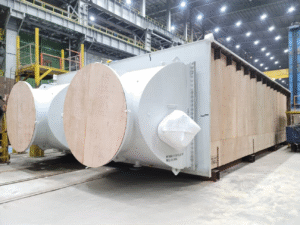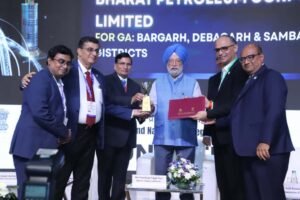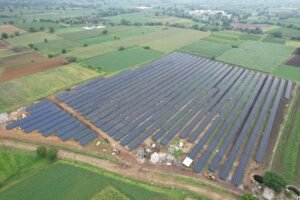Greater Noida (Hridaya Mohan): In a landmark event set to reshape India’s infrastructural landscape, Prime Minister Narendra Modi will inaugurate the Chenab Bridge on June 6, 2025. This bridge, with a project cost of ₹1,486 crore, acclaimed as the world’s highest railway arch bridge, stands as a testament to India’s engineering prowess and commitment to national integration.
Engineering Feat Beyond Compare
In the formidable Pir Panjal range of Jammu and Kashmir, where the Chenab River carves through steep gorges, India constructed an engineering marvel that combines cutting-edge technology with homegrown innovation. Perched 359 meters (1,178 feet) above the Chenab River, the Chenab Bridge surpasses the Eiffel Tower by 35 meters, making it the tallest railway bridge globally. Spanning 1,315 meters in length, the bridge features a main arch span of 467 meters, constructed using over 28,000 metric tonnes of steel and 46,000 cubic meters of concrete. Designed to endure winds up to 266 km/h and earthquakes of magnitude 8 as located in seismic Zone IV, the bridge is expected to have a lifespan of 120 years. Built across a deep gorge with near-vertical cliffs, construction required innovative solutions. Engineers employed a cable crane system – the largest in India – to transport materials across the chasm where traditional methods were impossible. The Chenab Bridge represents not just an infrastructural achievement but a bold statement of India’s engineering capabilities.
SAIL-Bhilai Steel: The Backbone of the Chenab Bridge
What makes this project particularly significant is its reliance on indigenous expertise and materials. A significant contributor to this engineering marvel is the Steel Authority of India Limited (SAIL), specifically its Bhilai Steel Plant (BSP). Following the 2019 Pulwama attack, the project required blast-resistant features and enhanced security protocols. BSP developed and supplied the special-grade steel required for the bridge’s construction, including 63 mm-thick blast-proof steel plates without compromising the construction timeline. These plates were rigorously tested to withstand high-intensity blasts of up to 40 kg of TNT, ensuring the bridge’s resilience against potential threats.
The steel from Bhilai was also utilized in the fabrication of the bridge’s 161 girders, each measuring eight meters in length. These girders form the superstructure of the bridge, providing the necessary support and stability for railway operations. The bridge’s massive 10,000-tonne steel arch, designed to withstand the extreme Himalayan climate ranging from -20°C winters to 40°C summers. This steel represents a technological breakthrough for Indian infrastructure projects.
BSP developed a unique steel composition that maintains its structural integrity even in freezing temperatures where ordinary steel would become brittle. The material includes:
- A specialized chemical composition that prevents cold-temperature fracturing
- Advanced corrosion-resistant coating to combat moisture and salinity
- Exceptional strength-to-weight ratio to support heavy rail traffic
This marks a watershed moment in India’s infrastructure development – the first time critical components for such an ambitious high-altitude project have been entirely sourced domestically, reducing dependence on foreign imports and showcasing the capabilities of India’s steel industry.
Strategic Significance
The Chenab Bridge is a pivotal component of the Udhampur-Srinagar-Baramulla Railway Link (USBRL) project, a 272-kilometer initiative aimed at integrating the Kashmir Valley with the rest of India. This all-weather connectivity is anticipated to bolster economic activities, enhance tourism and facilitate the movement of defense personnel and equipment, thereby strengthening national security. The bridge will also serve as a model for future Himalayan infrastructure projects like the Zojila Tunnel.
An Ideogram of Self-Reliance
Unlike comparable international projects like China’s Beipanjiang Bridge – which relied heavily on foreign technology – the Chenab Bridge stands as a testament to India’s growing engineering independence. From design to execution, the project has been led by Indian engineers from Konkan Railway Corporation Limited, using materials developed by Indian Steel Plants.
The bridge incorporates state-of-the-art monitoring systems with over 300 sensors providing real-time data on structural health, vibration and environmental conditions – a system developed by Indian researchers at the Structural Engineering Research Centre, Chennai.
Inauguration Amidst Developmental Initiatives
Prime Minister Modi’s visit to Jammu and Kashmir marks his first since the Pahalgam terror attack and Operation Sindoor. During this visit, he will also inaugurate the Anji Khad Bridge, India’s first cable-stayed railway bridge and flag off two Vande Bharat Express trains connecting Katra to Srinagar. These initiatives are part of a broader infrastructure development plan worth ₹46,000 crore aimed at enhancing connectivity and fostering regional development.
A Symbol of National Integration
The Chenab Bridge is more than an infrastructural marvel; it symbolizes India’s resolve to overcome geographical and political challenges to achieve national integration. By connecting the remote regions of Jammu and Kashmir to the national railway network, the bridge stands as a beacon of progress and unity.
Looking Ahead
As the Chenab Bridge opens to rail traffic, it is poised to transform the socio-economic landscape of Jammu and Kashmir. By reducing travel time between Katra and Srinagar from 6–7 hours to just 3 hours via the Vande Bharat Express, the bridge will facilitate trade, tourism and cultural exchange, ushering in a new era of prosperity for the region.
More Than Steel and Concrete
The Chenab Bridge represents the convergence of India’s engineering ambition and manufacturing capability. As trains begin crossing this architectural wonder, they will do so on tracks supported by Bhilai’s steel and Indian ingenuity. In the challenging terrain where empires of the past struggled to maintain supply lines, independent India is writing a new chapter of connectivity and self-reliance – one steel girder at a time.
Engineering a Naya Kashmir! 🇮🇳
PM @NarendraModi ji will flag off a new era on June 6th, inaugurating the Chenab Bridge in J&K – the world’s highest railway bridge!
This engineering marvel embodies #NewIndia‘s commitment to connectivity and regional development. pic.twitter.com/B1PcJodTMm
— Piyush Goyal (@PiyushGoyal) June 4, 2025
About the Author

(hridayamohan@yahoo.co.in)
Mr. Hridaya Mohan (hridayamohan@yahoo.co.in) is a regular Columnist with a renowned Indian daily “The Hitavada”, “Bharat Neeti Media” and some other newspapers / magazines internationally. Superannuated as Executive Director, Steel Authority of India Ltd. (SAIL), he is Senior Adviser, Metallon Holdings Pvt. Ltd. presently. He headed SAIL office at Beijing as Chief Representative (China & Mongolia) for six years. He has published and presented seventeen papers globally. Recipient of “Sir M Visvesvaraya Gold Medal”for one of his papers, “Benchmarking of Maintenance Practices in Steel Industry” from The Institution of Engineers (India), he was awarded with “Scroll of Honour” for the excellent contributions to Engineering fraternity from IE(I), Bhilai, “Jawahar Award” for leadership excellence in SAIL and “Supply Chain Leader – 2017” award from IIMM.









